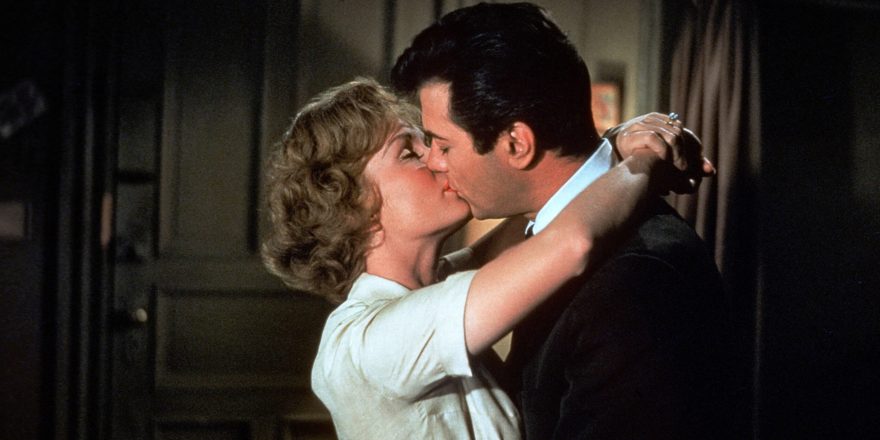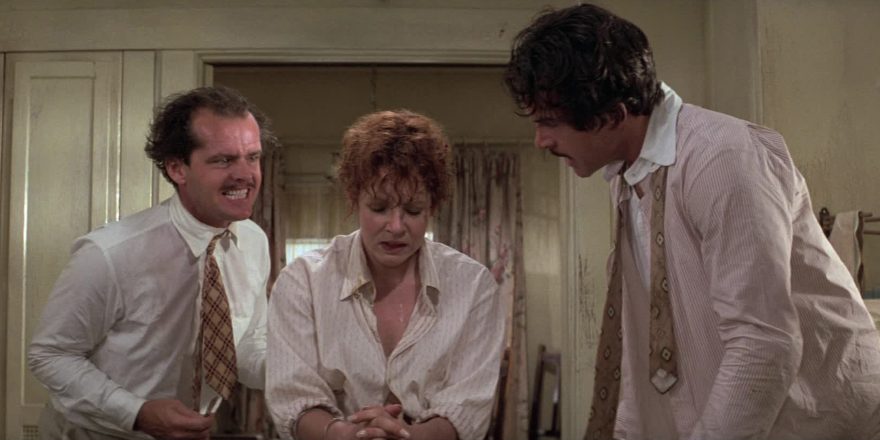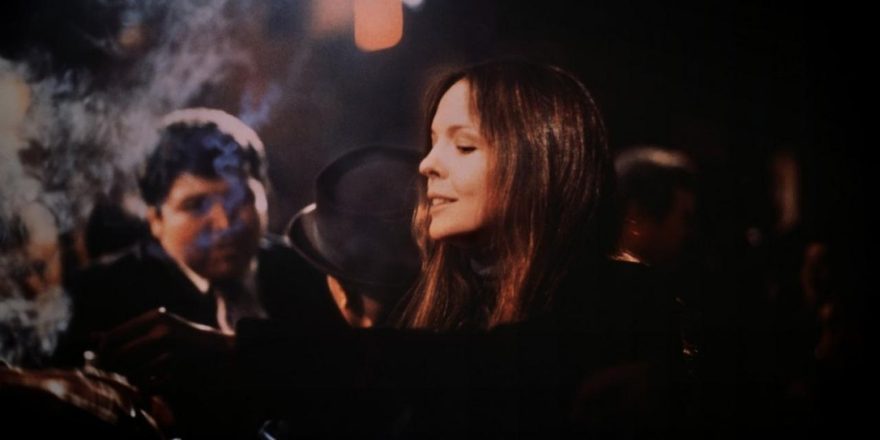The recent, sad passing of Hollywood legend Debbie Reynolds, apparently owing to a broken heart over the premature death of her daughter, Carrie Fisher, made me reflect on the spunky star’s film career, and, in some ways, how underappreciated she was. Her best friend (and later arch-nemesis), Elizabeth Taylor, always overshadowed her, both on and off screen.
Reynolds and Taylor met while both under contract to MGM as teenagers, but Taylor obviously became a much bigger star, a two-time Oscar winner with an enormously impressive filmography and a tumultuous personal life – married eight times – that made for decades of juicy tabloid fodder. In the ’50s, Reynolds was married to slick crooner Eddie Fisher, whose best friend, movie producer Mike Todd, was married to Elizabeth Taylor. (At their wedding, Fisher was Todd’s best man, and Reynolds Taylor’s maid of honor.) After Todd died in a plane crash, Fisher comforted and became romantically involved with Taylor, divorcing Reynolds to marry her in 1958. The saga created a seismic scandal, and engendered much sympathy for the jilted Reynolds, the Jennifer Aniston of her day. Aniston, like Reynolds, was the plucky girl-next-door, an America’s sweetheart-type, who lost her husband to a sultry, voluptuous megastar, Angelina Jolie. (It must be acknowledged, however, that Jolie, in terms of movie roles and acting chops, is no Elizabeth Taylor.) Taylor later dumped Fisher when she fell in love with Richard Burton on the set of Cleopatra in 1963, while Reynolds eventually confessed that it was Fisher, not Taylor, whom she blamed for the breakup of her marriage. In a final, heart-rending twist, Reynolds and Taylor became good friends again late in life when, by chance, they bumped into each other on a cruise ship. It’s a beautiful, unexpected Hollywood female melodrama happy ending, worthy of Vincent Sherman or George Cukor, the two gutsy female stars reunited after their husbands had long since faded away.
After her big breakout role in Singin’ in the Rain (1952), Reynolds seemed to be forever typecast as the bubbly, mettlesome blond girl, definitely the kind you do take home to mother. In the ’50s, in direct counterpoint to blond bombshells like Marilyn Monroe and Jayne Mansfield, she played the wholesome ingénue in any number of light comedies and musicals (The Affairs of Dobie Gillis, The Tender Trap, Bundle of Joy, This Happy Feeling, Tammy and the Bachelor, The Mating Game, etc.), the eternal teenager, decidedly virginal, without much overt sex appeal. Elizabeth Taylor, on the other hand, ended the ’50s with three great sexpot roles (Cat on a Hot Tin Roof, Butterfield 8 and Suddenly, Last Summer), setting the stage for her ’60s apotheosis as the ultimate, if often damaged or ambivalent, sex goddess.
Although Reynolds stayed true to her intrepid and/or virginal persona throughout the ’60s (The Unsinkable Molly Brown, The Singing Nun), she also began to take on a number of roles that allowed her to play against type, and to explore her “adult” acting more seriously (she had successfully played one dramatic role earlier when she starred opposite Bette Davis in The Catered Affair in 1956). The four movies that exemplify this evolution for me – which happen to be, along with Singin’ in the Rain, my favorite Debbie Reynolds films – are The Rat Race (1960), Goodbye Charlie (1964), Divorce American Style (1967) and What’s the Matter with Helen? (1971). The former two films in particular demonstrate a range and depth largely untapped in previous films, so these are the two, both underappreciated, that I’ll concentrate on now.
The Rat Race, directed by Robert Mulligan (who would go on to direct To Kill a Mockingbird, as well as two great Natalie Wood vehicles, Love with a Proper Stranger and Inside Daisy Clover), is an overlooked gem that allows Reynolds to channel all the angst and anger that one might imagine she felt over her tabloid tribulations. (When I saw it on TV as a kid, I was mesmerized by her performance.) Based on a play and screenplay by Garson Kanin, the movie concerns an aspiring jazz musician from Milwaukee, Pete Hammond, Jr. (Tony Curtis), who is moving into the same tiny apartment that Peggy Brown (Reynolds), an aspiring model and reluctant taxi dancer, has just been evicted from by hard-nosed slumlord “Soda” Gallo (the always reliable Kay Medford). Pete takes pity on Peggy and suggests that they temporarily share the room to save on rent. Playing against her usual optimistic, cheery type, Reynolds sinks her teeth into the gritty, cynical Peggy, a hard-as-nails broad who does everything in her power not to sell her body for sex. (Significantly, the same year, Elizabeth Taylor won what some regarded as a “sympathy Oscar” – she had just gotten over a serious bout of pneumonia – for Butterfield 8, in which she played an unapologetic prostitute who, of course, has to die in a gruesome car accident at the end of the film.) Peggy equally takes pity on the hopelessly naive Pete, and helps him negotiate the unforgiving Manhattan rat race.
Reynolds is a revelation here, bringing a seething inner rage to her character as she is mauled by sailors at the dancehall and harassed by her mobster boss, Nellie (a suitably nefarious Don Rickles). The scene in which Nellie menacingly orders her to take off her clothes down to her underwear to prove how much she owes him is harrowing, the grim striptease gutsily played by Reynolds. Peggy’s heart very slowly begins to soften when she realizes how pure and innocent Pete really is; she comes close to selling her body to buy him a saxophone after a group of thugs posing as legitimate musicians steal all his instruments. Curtis, for his part, also plays against type as the Midwestern rube, a character about as far removed as you can imagine from his turn as Sidney Falco, the jaded press agent he played so impressively in Sweet Smell of Success three years earlier. It’s a brilliant twist to reverse the expectations of the stars’ respective personae in The Rat Race, and it really pays off for Reynolds, who simmers through the film with a sexual bravado never seen from her before. Her glamorous entrance into the bar, alone, at the beginning of the film, is enough to shake off a decade of sexually inert, girl-next-door roles.
Four years later, Reynolds and Curtis paired up again for Goodbye Charlie, directed by Hollywood legend Vincente Minnelli, which was considered a flop when it was released in 1964. Based on a play by George Axelrod (screenwriter of Breakfast at Tiffany’s and The Manchurian Candidate, and writer-director of the great ’60s Tuesday Weld vehicle Lord Love a Duck), the titular character, Charlie Sorel, is a womanizing, second-rate screenwriter who, after being shot on a yacht by filmmaker Sir Leopold Sartori (Walter Matthau) for fooling around with his wife, Rusty (Laura Devon), drowns in the ocean and is reincarnated in the body of a beautiful blonde played by Reynolds. When Sorel’s best friend, novelist George Tracy (Curtis, in one of those roles he was born to play), comes to L.A. to deliver Charlie’s eulogy, only three people show up to his funeral: his agent, and two of his former (married) dalliances – Janie (Joanna Barnes) and Franny (a young Ellen Burstyn, billed as Ellen McRae). The script is full of great gags and one-liners (“I read your last book. It wasn’t bad,” the cop character says to George. “It wasn’t meant to be,” he replies), and Curtis is in top form, but the film really belongs to Reynolds. She plays way against type not only as a man trapped in a woman’s body, but in a film about the sleazy side of Hollywood, all philandering and adultery and blackmail, a role far removed from her squeaky clean image. (When Reynolds as Charlie poses as his own widow and goes to a party thrown by Sartori, with George, a couple of guests comment, “The widow and the best friend socializing with the murderer?” “That’s show business!”) As a star who had been through the Hollywood mill since her teenage years, and who was the victim herself of a high-profile adulterous affair, Reynolds must have relished a role that satirized the sleazy underbelly of the so-called Dream Machine that she’d been previously, ceremoniously, dragged through.
A few misguided critics have suggested that Reynolds was miscast in Goodbye Charlie, that it would have been more suited to a sex siren like Monroe or Mansfield, but they’re totally missing the point: neither of those stars could have played the butch swagger and masculine vigour of Charlie with the same brio as Debbie Reynolds. In the early scene in which Charlie has to convince George that he’s really his best friend in a woman’s body, Reynolds’ manly body language, the way she holds a cigarette over-hand, the way she manspreads, is completely convincing.
In perhaps the film’s most memorable scene, in which Charlie realizes the autoerotic potential of living inside the body of a sexy broad, she conveys a kind of leering male sexuality and a feminine concupiscence at the same time. “How about that, my my,” says George, “Good old Mother Nature. Imagine, I don’t have to go see Brigitte Bardot movies anymore. All I have to do is come home and pull down the shades.” It’s a scene that could have come across as creepy, but Reynolds imbues it with a sense of wonder and appreciation for the female form that makes it charming.
In a later scene, when Charlie goes to the beauty parlor to get his hair and nails done, and to roll out his plan to blackmail Janie and Franny, he checks out the female patrons with a wandering eye and gives the receptionist a slap on the ass. Reynolds brings a deadpan panache to the proceedings, strutting around like a fox in the henhouse. Axelrod’s ingenious scenario, which, in 1964, must have been pretty risqué, brings the homosexual subtext of Minnelli’s earlier films to the surface, as Charlie, a woman to any outside observer, comes on to other women and treats them like sex objects, the lesbian connotations inescapable. Later, when Charlie figures out how using his feminine wiles can be a very effective weapon, he starts to cry until George comforts him with a bit too much physical affection. George’s homosexual panic kicks in as he jumps back from Charlie and exclaims, “We were practically necking!”
Although obviously not the masterpiece that Some Like It Hot is, Goodbye Charlie mines much of the same territory, this time with Tony Curtis wearing the shoe on the other foot, falling as he does for, in essence, a female cross-dresser. “George, do you think I’m attractive?” asks Charlie. “Man to man. Tell me the truth.” Obviously George and Charlie, before he was a woman, already had a strong bromance going on, but now that Charlie’s in female form, there’s not much holding them back from jumping each other’s bones outside of the Motion Picture Production Code, which would be abandoned a mere four years later in 1968.
Reynolds and Curtis share the best lines in the film, and they both deliver them with impeccable comic timing. When George asks Charlie where in the bookcase the vodka is hidden, Charlie replies, “Behind War and Peace. Where else would you hide vodka in a bookcase?” Classic Axelrod. When, toward the end of the film, Rusty shoots Charlie, who she thinks is Charlie’s widow, for sleeping around with her husband, Satori (who previously shot Charlie, when he was a man, for sleeping with Rusty!), George says to her, “And you, a veteran of every hotel from here to Oxnard, you gotta turn righteous and shoot Charlie!” It’s a wild, mixed-up bedroom farce, a genre that Curtis made hay out of in the ’60s (think Sex and the Single Girl, Boeing Boeing, Not with My Wife, You Don’t!, etc.), but one at which Reynolds, in Goodbye Charlie, proved equally adept. It’s almost a pity that Reynolds wasn’t given more opportunities to explore her impressive range and dramatic potential, which these two films, and a handful of others, gave full reign.





